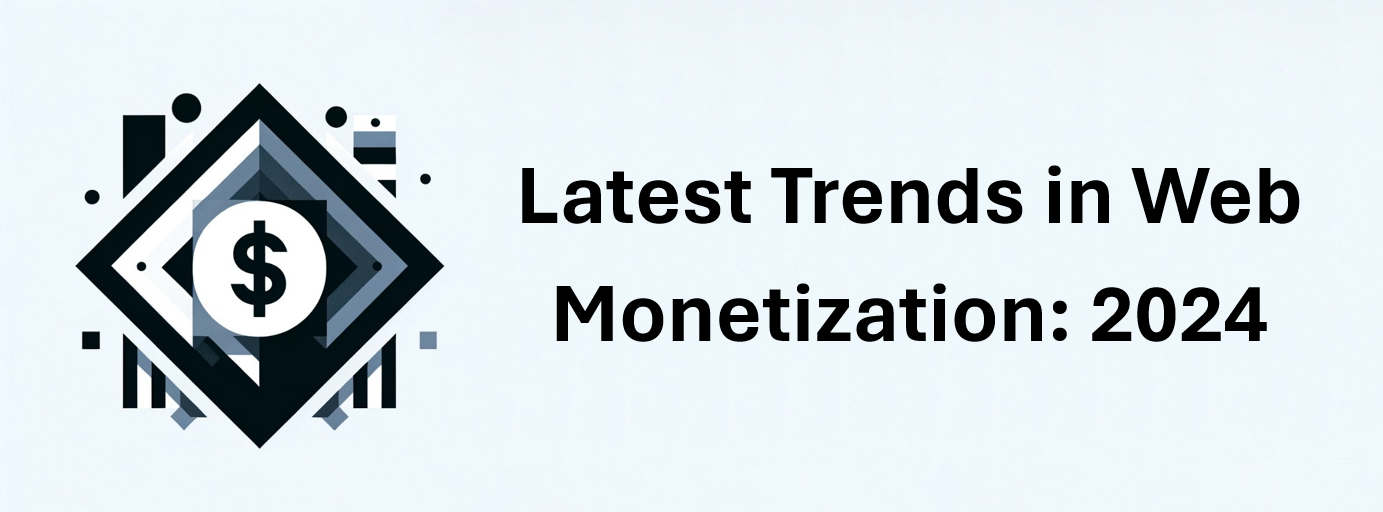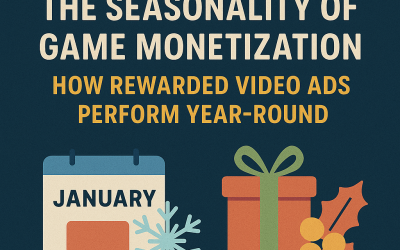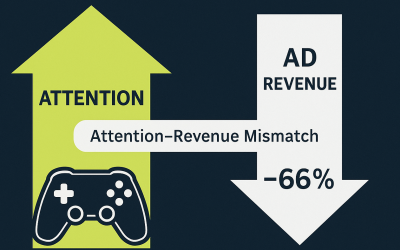Latest Trends in Web Monetization: 2024
The digital world is in a constant state of flux, with web monetization methods evolving at a rapid pace. Publishers and content creators are on a perpetual quest for innovative strategies that balance revenue generation with a seamless user experience. In this deep dive, we explore the cutting-edge trends that are reshaping the web monetization landscape, with a particular focus on rewarded video ads, subscription models, ad personalization, blockchain integration, and mobile-first strategies.
In this post, I will try to highlight some of the web monetization trends and tools we see in the market. To easily follow or hop to a topic of your choice, you can always refer to this table of content.
[ez-toc]
Contents
The Rise of Rewarded Video Ads
Rewarded video ads is a powerhouse in the web monetization arena, esp games. This model incentivizes user engagement by offering rewards for watching video ads. The rewards could range from premium content access to in-game bonuses, making it an attractive proposition for users. For publishers, this translates into higher ad completion rates and, consequently, increased CPMs (Cost Per Mille, or the cost per thousand impressions). The key to success with rewarded video ads lies in striking the perfect balance between ad frequency and reward value, ensuring users feel genuinely compensated for their time.
Here are few of the advantages and disadvantages of using Rewarded Video Ads
Pros:
-
- Higher Engagement: Users are more likely to watch an entire ad if they receive a reward, leading to higher engagement rates.
- Positive User Experience: Offering rewards can enhance the user experience by providing value, making ads less intrusive.
- Increased Revenue: High completion rates translate to higher CPMs and overall revenue.
Cons:
-
- Content Interruption: If not implemented carefully, these ads can disrupt the user experience.
- Reward Dependency: Users might become accustomed to receiving rewards, potentially affecting their willingness to engage with content without incentives.
-
Subscription Models and Incentivized Ads: A Hybrid Approach
Continuing on “Latest Trends in Web Monetization: 2024” post, the blending of subscription models with incentivized ads represents a flexible monetization strategy that caters to diverse user preferences. While some users may prefer a straightforward subscription model for ad-free content access, others might opt for a more economical route, engaging with ads to gain temporary access to premium content. This hybrid model not only broadens the audience base but also introduces a dynamic revenue generation method. It’s essential for publishers to carefully design these models to avoid user experience dilution, ensuring the value proposition is clear and compelling.
Here are few of the advantages and disadvantages of using Subscription Models and Incentivized Ads
Pros:
-
- Flexibility for Users: Provides options for how users access content, enhancing satisfaction and retention.
- Increased Revenue Streams: Publishers can earn from both subscriptions and ad engagements.
- Broader Audience Reach: Attracts both users who prefer ad-supported access and those willing to pay for a premium experience.
 Cons:
Cons:
-
- Complex Implementation: Balancing and maintaining two monetization strategies can be challenging.
- Potential for User Confusion: Users may be unclear about the benefits of each option, affecting their decision-making.
-
Leveraging Data for Personalized Ad Experiences
Continuing on “Latest Trends in Web Monetization: 2024” post, personalization is becoming a cornerstone of effective web monetization strategies. Utilizing data analytics, publishers can now offer ads tailored to the individual user’s interests and behaviors, significantly enhancing the ad’s relevance and engagement potential. This targeted approach not only improves user satisfaction but also drives higher conversion rates, making it a win-win for both advertisers and publishers. The challenge here is to balance personalization with privacy, ensuring user data is handled responsibly and transparently.
Here are few of the advantages and disadvantages of using this approch
Pros:
-
- Higher Ad Relevance: Personalized ads are more engaging and less likely to be perceived as annoying.
- Increased Ad Performance: Tailored ads often result in higher click-through and conversion rates.
- Better User Insights: Collecting data for personalization provides valuable insights into user preferences and behaviors.
Cons:
-
- Privacy Concerns: Collecting and using personal data requires strict adherence to privacy laws and user consent.
- Resource Intensive: Requires sophisticated technology and analytics to implement effectively.
-
Blockchain: The New Paradigm of Transparency and Security
Blockchain technology is introducing a new level of transparency and security in web monetization. It enables microtransactions, which are particularly useful for pay-per-article models or tipping content creators. Blockchain’s decentralized nature ensures that transactions are secure, transparent, and free from intermediary fees. For publishers, this means access to a global audience and a reduction in dependency on traditional payment systems. The adoption of blockchain requires technical know-how and user education but offers a promising avenue for innovative monetization.
Here are few of the advantages and disadvantages of using Blockchain Monetization
Pros:
-
- Enhanced Transparency: Transactions are recorded on a public ledger, increasing trust.
- Reduced Fraud: Blockchain’s security features can minimize ad fraud and ensure fair payment.
- Innovative Revenue Models: Allows for microtransactions, appealing to users who prefer to pay for what they consume.
Cons:
-
- Technical Complexity: Implementing blockchain solutions requires significant technical expertise.
- Adoption Barriers: Users and publishers may be hesitant to adopt due to the perceived complexity and unfamiliarity with blockchain.
-
Mobile-First Strategies: Optimizing for the Handheld Audience

With the majority of internet users accessing the web via mobile devices, optimizing monetization strategies for mobile is non-negotiable. Mobile-friendly rewarded video ads, responsive design, and fast-loading content are crucial components of a successful mobile monetization strategy. Here, the goal is to ensure that ads and content are not only accessible but also engaging on smaller screens, without compromising loading times or user experience. Embracing a mobile-first approach is essential for capturing the ever-growing mobile audience effectively.
Here are few of the advantages and disadvantages of using Mobile First Strategies
Pros:
-
- Broad Reach: Mobile optimization allows publishers to reach a vast audience of mobile users.
- Enhanced User Experience: Mobile-friendly designs and ads improve usability and satisfaction.
- Increased Engagement: Mobile users tend to spend more time online, offering more opportunities for engagement.
Cons:
-
- Screen Size Limitations: Designing for smaller screens can limit ad formats and content presentation.
- Ad Blockers: Mobile ad blockers can reduce the effectiveness of ad-based monetization strategies.
On “Latest Trends in Web Monetization: 2024” post, we have tried to cover the top 5 tools currently popular among Publishers. The web monetization landscape is evolving, driven by the adoption of innovative strategies like rewarded video ads, hybrid subscription models, personalized advertising, blockchain technology, and mobile-first approaches. Therefore, for publishers and content creators, staying abreast of these trends is crucial for tapping into new revenue streams while maintaining an engaging user experience. As we move forward, the ability to adapt and innovate will be key to thriving in the dynamic world of web monetization.
By understanding the pros and cons of each trend, publishers and content creators can make informed decisions about which strategies to implement, balancing the need for revenue generation with providing a positive user experience.




